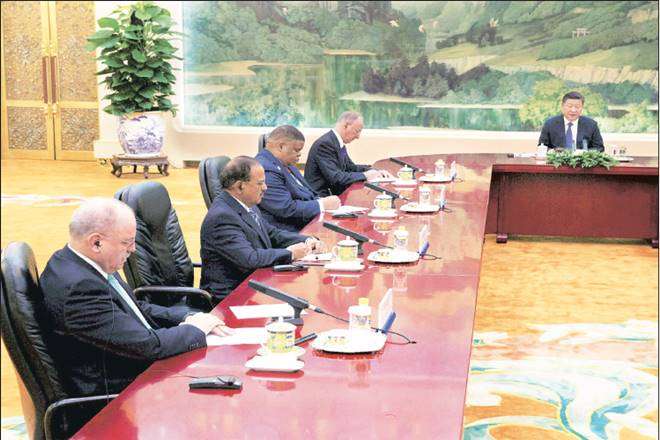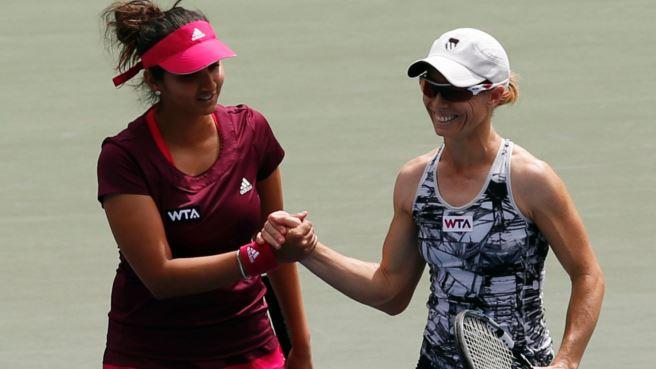July 30, 2017
The world is nowhere close to embracing Pope John's impassioned declaration "No more war, never again war". Since the end of World War II, the world has witnessed hot wars, cold wars, civil wars, secessionist wars, jihadi wars, invasion, annexation and many other kinds of violent conflict.

July 30, 2017
The world is nowhere close to embracing Pope John's impassioned declaration "No more war, never again war". Since the end of World War II, the world has witnessed hot wars, cold wars, civil wars, secessionist wars, jihadi wars, invasion, annexation and many other kinds of violent conflict.

Not a day has passed without loss of lives in armed conflicts. India and China fought a war in 1962. After the war ended, there was a fragile peace. In 1988 Rajiv Gandhi was invited to China. It was a historic visit. Remember the famous l-o-n-g handshake with Deng Xiaoping! The two countries agreed to talk to each other and resolve all differences about the border/boundary through negotiations. Shortly afterwards, special representatives were appointed.
India, China gained time
From time to time, there were incidents. Talks followed. Issues were resolved. More recently, armed conflict was avoided in Depsang (2013) and Demchok and Chumar (2014). 'Understandings' were arrived at. In 2012, an agreement was reached that the tri-junction issue between India and China will be resolved in consultation with the third party, Bhutan, in whose territory the tri-junction was located (and because of the special relationship of India with Bhutan).
Both countries, by avoiding armed conflict, gained valuable time to focus on economic development. China is well on its way to be described as a middle-income country; it has lifted all but 5% of its vast population of 1,380 million from poverty. It has become the world's factory and its exports have helped it build a foreign exchange reserve of over $3,000 billion. It is a nuclear power, it has the largest active standing army in the world, it has the capacity to venture deep into the South China Seas and the Indian Ocean, and it is believed to have the capacity to strike at distant targets.
India has also made considerable progress notwithstanding loud noises that nothing happened in the years up to 2014 (including, presumably, the Vajpayee years 1998-2004), but India is a few steps behind China. Since 1991, India has lifted over 250 million people out of poverty. Its foreign exchange reserves stand at $380 billion. It is a nuclear power, it has the second largest active standing Army in the world, and it has the capacity to defend itself against any aggression by a foreign power.
For these very reasons, India and China should guard against being drawn into a shooting war. Every time – and I mean, every time – diplomacy must succeed and the sabres must remain sheathed. Wordfare (if I may coin a word) should not become warfare.
Is it different now?
The development near the tri-junction of India-Bhutan-China in the Dolam plateau (that lies in the Doklam region) on June 16, 2017, should remain an 'incident' that can be resolved through talks. But, I am afraid, indications are to the contrary. The 'incident' has acquired sinister proportions. No one can deny that there is a marked difference between the 2017 incident and the incidents of 2013 and 2014.
Just look at the public statements of India and China. On the Indian side, statements have been made by the army chief (June 8, 2017), ministry of external affairs (June 30), finance minister (June 30), foreign secretary (July 11), MoS, PMO (July 12), and external affairs minister (July 20). The responders on the side of China have been only 'spokespersons' of the Foreign Ministry or the Army – until Mr. Wang Yi, the foreign minister, spoke on July 25, 2017, at Bangkok. Besides, the true intent of China was reflected in stinging write-ups that appeared in Global Times and Xinhua. The language of the Chinese side's responses was, to put it mildly, undiplomatic.
What has changed? If there is a change in China's attitude to India, what are the circumstances that led to the change? I believe the Government of India when it articulated its position in the following words: "India is deeply concerned at the recent Chinese actions and has conveyed to the Chinese government that such construction would represent a significant change of status quo with serious security implications for India." However, that is not enough. The government owes a duty to the people of India to explain what has changed and why it has changed. Such a statement can come only from the Prime Minister.
Will it stop with words?
The rhetoric on the Chinese side is getting shriller by the day. Every overture by India has been spurned. The NSA's visit to China was first belittled, then a perfunctory reference was made to talks among NSAs during which China set forth its position on "bilateral issues and major problems". Contrary to the usual rules of diplomacy, China seems to have left no negotiating room for itself. It has laid down a non-negotiable condition and, at the same time, closed every avenue for negotiation. Xinhua wrote on July 15, 2017, "China has made it clear that there is no room for negotiations on this incident and India must withdraw its border-crossing troops from Doklam."
Discerning observers in India are naturally concerned but there is no such concern expressed by any one in China. The United States was the first country to openly advise restraint and urge talks. Many other countries which had been briefed by both India and China have strangely remained silent.
The gathering clouds are ominous. I am clear in my mind that under no circumstances should there be a shooting war between India and China. I am sure that is also the view of the Government of India, but I doubt if it is the view of the Government of China. Only time will tell what and when misjudgments were made.
Courtesy/Source: The Financial Express
















































































































